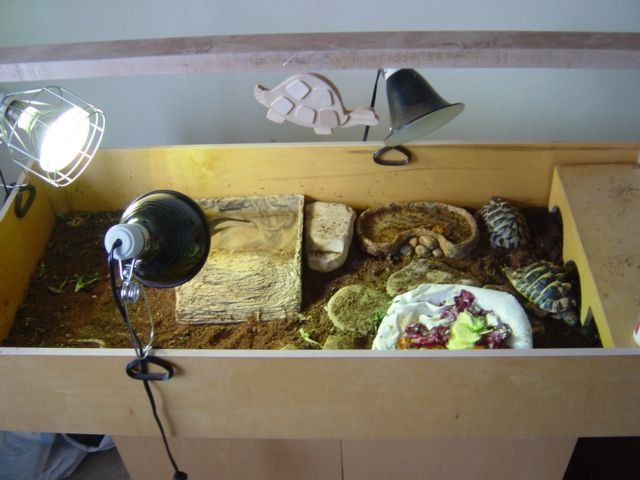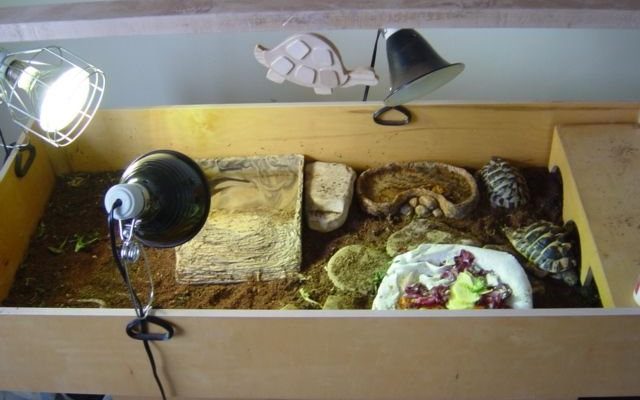
Whether you’re a longtime tortoise lover or a new owner, setting up the right enclosure can feel a bit overwhelming. But don’t worry; I’m here to break it down for you. We’ll cover everything from the size and type of enclosure to the must-have features that will keep your tortoise thriving. So, grab your coffee, and let’s dive in!
Choosing the Right Enclosure Size
When you’re thinking about housing a Hermann’s tortoise, the first thing you need to consider is *size*. Hermann’s tortoises can grow to about 8 to 12 inches in length, depending on their age and health. Consequently, their enclosure must provide ample space for them to roam and bask.
Generally, a good rule of thumb is to allow at least 4 square feet per tortoise for outdoor enclosures. If you’re keeping them indoors, look for a minimum size of 2 feet long by 4 feet wide. These dimensions give them enough room to move and exhibit natural behaviors.
If you have multiple tortoises, it’s crucial to increase the size accordingly. Tortoises can be territorial, so having a larger space reduces the potential for conflict. Remember, the more room they have, the happier they will be. Honestly, no one enjoys feeling cramped, and tortoises are no exception!
Indoor vs. Outdoor Enclosures
So, should you keep your Hermann’s tortoise indoors or outdoors? The answer really depends on your living situation and climate. Let me explain the pros and cons of each:
Indoor Enclosures:
– Pros: You can easily control the temperature and humidity levels, keep them away from predators, and prevent them from escaping.
– Cons: It might be challenging to provide enough space and natural sunlight for them to thrive.
Outdoor Enclosures:
– Pros: They get natural sunlight and can engage in natural behaviors like digging and grazing on grass and weeds.
– Cons: You need to ensure their enclosure is predator-proof and has adequate shelter from harsh weather.
When choosing between the two, consider the climate in your area. If it gets too cold in winter, an indoor setup may be more suitable.
Materials for the Enclosure
The next step is deciding what your enclosure will be made from. You have a few options, each with its own benefits. Here are some materials you might consider:
- Wood: Durable and aesthetically pleasing, wood can be great for outdoor enclosures. Just make sure it’s treated to resist moisture.
- Plastic: Lightweight and easy to clean, plastic is a fantastic option for indoor setups.
- Glass: While visually appealing, glass enclosures can be less forgiving when it comes to maintaining temperature and humidity.
Think about how you’ll maintain temperature and humidity levels too. For instance, plastic enclosures often need help with ventilation. Honestly, you want something practical and safe for your tortoise. That means selecting materials that are nontoxic and sturdy.
Creating a Natural Habitat
Now that you have the right enclosure, it’s time to make it feel like home for your Hermann’s tortoise. Here’s how to create a natural habitat that mimics their wild environment:
1. Substrate: Use a mix of organic soil, coconut coir, or a commercial tortoise substrate. This allows them to burrow, which is a natural behavior. Avoid cedar or pine shavings, as they can be harmful.
2. Hiding Spots: Tortoises need places to hide and feel secure. You can add rocks, logs, or commercial hiding spots. Just make sure these aren’t sharp or too heavy.
3. Plants: Live plants can enhance their enclosure’s natural feel. However, make sure they’re safe and non-toxic. Consider adding things like dandelions, clover, or safe ornamental plants.
When you think about your tortoise’s habitat, imagine the wild. They’re used to a mix of sun and shade, plants to munch on, and places to hide. Honestly, the more you can replicate this, the happier they’ll be.
Temperature and Humidity Control
Maintaining the correct temperature and humidity is vital for your tortoise’s well-being. Hermann’s tortoises thrive in warm environments, so here’s how to set their enclosure up for success:
1. Temperature: Aim for a basking area of about 85-90°F and a cooler area around 70-75°F. You can use heat bulbs or ceramic heaters to achieve this.
2. Humidity: Hermann’s tortoises prefer mild humidity, ideally around 40% to 60%. You can monitor this with a hygrometer and use misting or shallow water dishes to maintain levels.
3. Lighting: If you’re keeping them indoors, invest in a UVB light to mimic sunlight. This helps them synthesize vitamin D3, which is crucial for shell and bone health.
Remember, temperature and humidity are like the air we breathe. Without the right levels, your tortoise can suffer from health issues. Keep an eye on these factors regularly.
Feeding and Care in the Enclosure
Your Hermann’s tortoise’s enclosure isn’t just a space to roam; it’s also where they’ll eat and drink. So, let’s talk about feeding and care.
Hermann’s tortoises are herbivores, which means they need a diet rich in greens and fiber. Here are some key points to consider:
– Diet: Leafy greens like kale, dandelion greens, and romaine lettuce are great choices. They also enjoy herbs like basil and parsley. Avoid iceberg lettuce, as it lacks nutritional value.
– Water: Always provide fresh water in a shallow dish. Change it daily to ensure it’s clean.
– Supplements: Depending on their diet, you might need to add calcium and multivitamins to their food to keep them healthy.
Regular feeding times will help your tortoise understand when to expect meals. Consistency is key! Honestly, when they know they’re getting fed, it adds to their overall happiness.
Maintaining the Enclosure
Last but not least, let’s chat about maintenance. Keeping your Hermann’s tortoise’s home clean is vital for their health. Here’s what you need to do:
1. Regular Cleaning: Spot clean daily by removing waste and uneaten food. A deep clean should be done every 1-2 weeks. Use mild soap and hot water—avoid harsh chemicals.
2. Monitor for Pests: Keep an eye out for insects or parasites that might invade the space. Remove any potential hiding spots outside the enclosure.
3. Check Temperature and Humidity: Make it a routine to check the temperature and humidity levels regularly. Keeping them in check ensures your tortoise is comfortable.
Think of maintenance like brushing your teeth. It’s not the most exciting task, but it’s necessary for a healthy, happy life. Keeping up with it will save you headaches in the long run!
In conclusion, housing your Hermann’s tortoise is all about creating a safe, engaging environment. By focusing on the right enclosure size, materials, and maintenance, you set your tortoise up for a happy life. Just like us, they thrive in spaces that feel like home. Good luck with your new companion, and enjoy the journey together!

